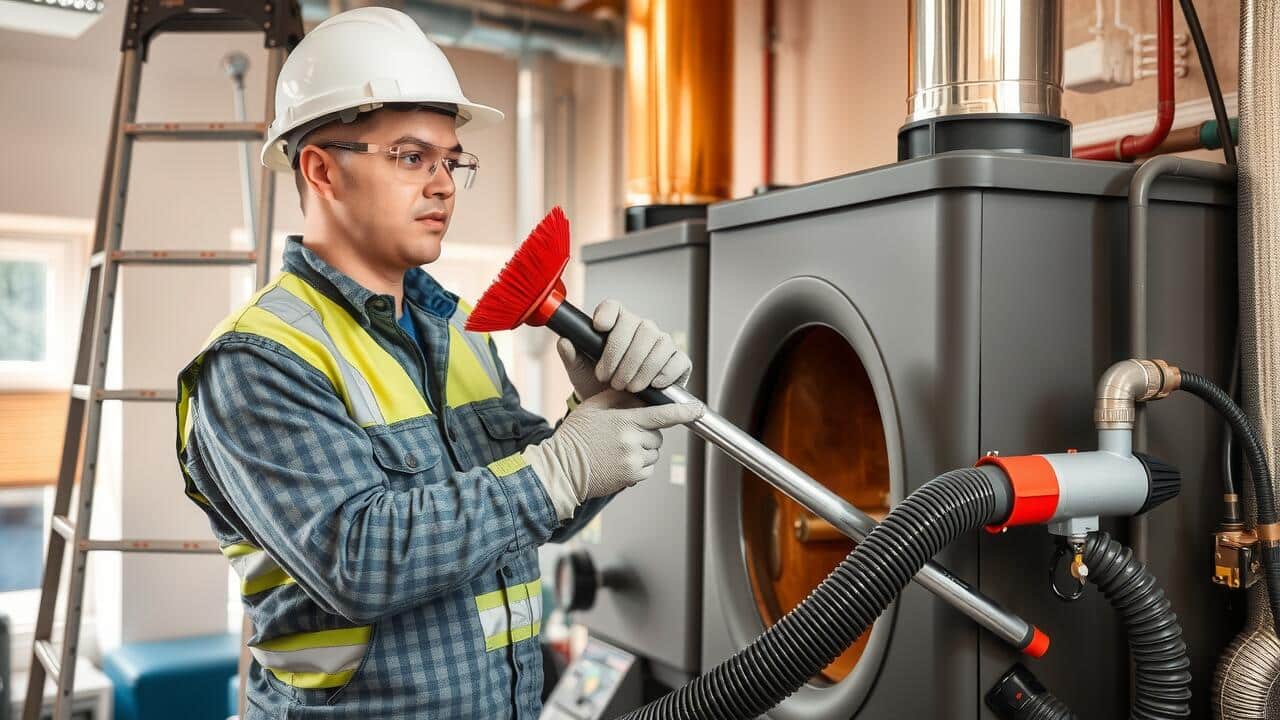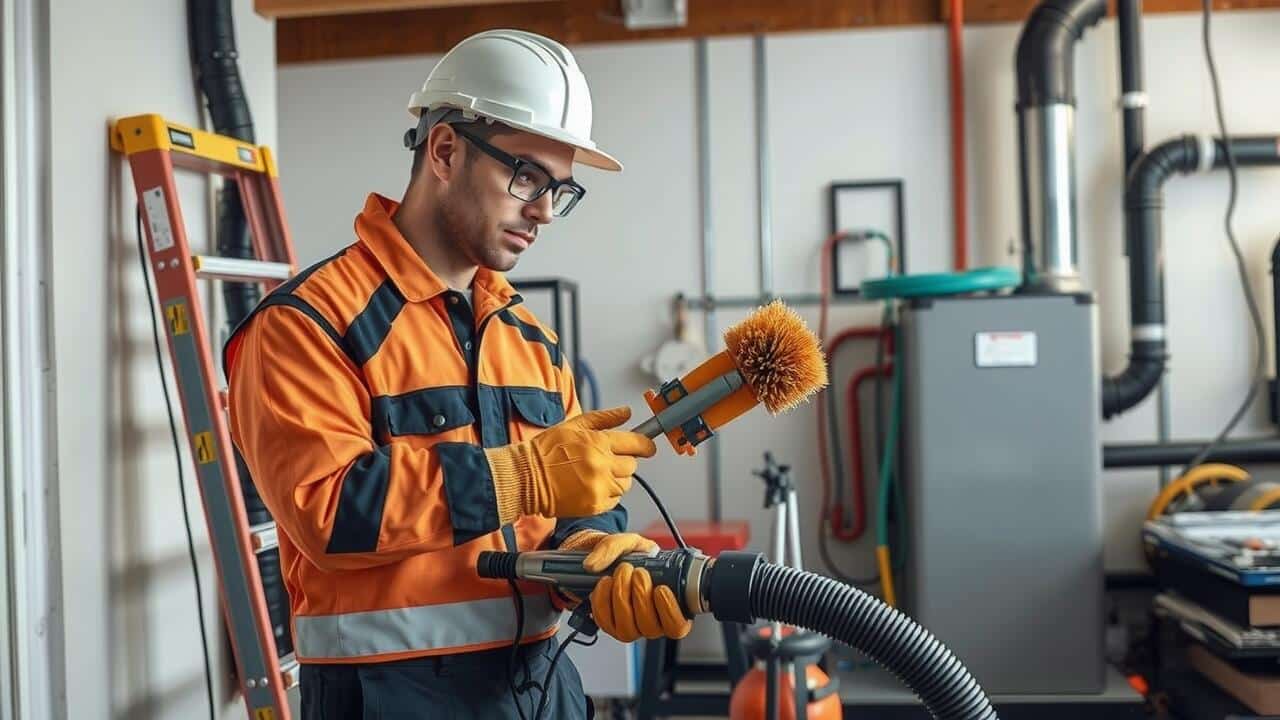At GoPro Chimney Sweep San Antonio, we understand the critical role that a clean boiler chimney plays in maintaining the safety and efficiency of your heating system. Our Boiler Chimney Cleaning service is designed to remove soot, debris, and other buildup that can obstruct airflow and lead to potential hazards like carbon monoxide leaks or chimney fires. Our skilled technicians utilize advanced tools and techniques to thoroughly inspect and clean your boiler chimney, ensuring optimal performance and compliance with safety standards. Trust us to keep your home warm and safe with our professional cleaning services, tailored to meet the unique needs of your boiler system.
Benefits of Hiring a Chimney Sweep
Engaging a professional chimney sweep offers numerous advantages for homeowners. Their expertise ensures that chimneys are cleaned thoroughly, which reduces the risk of fires caused by built-up soot and creosote. Regular maintenance performed by trained professionals can significantly enhance the safety and efficiency of gas heating systems. They possess the right tools and knowledge to identify potential issues before they become costly repairs.
In addition to safety benefits, hiring a chimney sweep can save homeowners money in the long run. When a chimney is well-maintained, it allows for better airflow, improving the performance of gas appliances. This efficiency translates to lower energy bills and extends the lifespan of the heating system. Professional sweeps are also able to provide valuable recommendations on maintenance schedules tailored to the specific needs of each home.
Professional Expertise and Safety
Chimney sweeping requires specialized knowledge and skills that only qualified professionals possess. An experienced chimney sweep understands the intricacies of various heating systems, including furnaces and fireplaces. They are trained to identify potential hazards, such as blockages, creosote buildup, and structural issues. By employing a professional, homeowners can ensure that their systems operate efficiently, minimizing the risk of fires and carbon monoxide leaks.
Safety is a paramount concern when it comes to chimney maintenance. Attempting to clean a chimney without proper tools or training can lead to dangerous situations. Professionals not only have the right equipment but also follow safety protocols to protect themselves and the home. Regular inspections and cleanings by experts help maintain optimal airflow and reduce the chances of hazardous incidents, giving homeowners peace of mind.
Frequency of Chimney Cleaning
Regular cleaning of a chimney stack is essential to maintain its efficiency and safety. The frequency of this maintenance largely depends on how often the stove or fireplace is used. For those who use their heating appliances regularly, it is advisable to have a professional sweep at least once a year. Homeowners who rely on their chimneys for daily heating should consider more frequent cleanings to prevent soot buildup and potential blockages.
In addition to usage, other factors can influence the need for chimney cleaning. The type of fuel burned—wood, gas, or oil—plays a significant role in determining how often maintenance is required. For instance, wood-burning appliances create more creosote, necessitating more frequent inspections and cleanings. Understanding these variables can help ensure optimal performance and safety for your chimney system.
Recommendations Based on Usage
Regular chimney cleaning is essential for optimal performance, especially depending on the frequency of use. Homeowners who use their fireplaces or stoves frequently should schedule professional cleanings at least once a year. For those who use their chimneys less frequently, cleaning every other year may suffice, but it is wise to inspect the chimney annually to check for soot buildup and creosote deposits.
Different fuel types also necessitate varied cleaning schedules. Those using wood-burning appliances typically require more frequent attention due to the higher production of creosote. Gas and oil systems may not accumulate as much residue, allowing for less frequent cleaning. However, understanding the specific needs of your system is key to maintaining both safety and efficiency.
Understanding Flue Types
Different types of flues serve various purposes in residential setups, impacting efficiency and safety. For instance, a chimney flue is designed to vent smoke and gases produced by wood-burning or coal-burning stoves and fireplaces. In contrast, a gas appliance may utilize a simpler venting system, relying on direct venting rather than a conventional chimney structure. Understanding these distinctions is essential for ensuring that appliances operate effectively and in compliance with safety standards.
Homeowners often overlook the impact of flue type when it comes to overall ventilation and maintenance. A clothes dryer flue is specifically designed to expel moisture and lint outside, which is essential for preventing fire hazards. Regular inspections of all types of flues can help identify blockages or deterioration, ensuring that appliances function properly and reducing the risk of hazardous situations. Proper knowledge of flue types allows for more effective cleaning and maintenance practices.
Differences Between Gas and Oil Flues
Gas flues typically handle the venting of combustion gases from natural gas or propane boilers. These systems utilize a straightforward design that allows for efficient removal of hot gases, helping to keep the appliance operating optimally. Since gas burns cleaner than oil, the buildup of soot and debris is generally less frequent, potentially leading to extended intervals between cleanings. However, regular inspection remains essential to ensure that the flue operates without blockages, which can lead to dangerous situations such as backdrafting.
In contrast, oil flues are generally designed for more robust construction due to the nature of the fuel they handle. The combustion of oil often produces more soot and residue, leading to more frequent cleanings. Regular maintenance is critical for oil-burning systems, as neglected flues can become severely restricted, affecting efficiency and increasing the risk of chimney fires. Understanding these differences helps homeowners determine the appropriate maintenance practices for their heating systems, ensuring safety and efficiency year-round.
FAQS
How often should I have my boiler chimney cleaned?
It is generally recommended to clean your boiler chimney at least once a year, but the frequency may vary based on usage and the type of fuel you use. Regular inspections can help determine the best schedule for your specific needs.
What are the benefits of hiring a professional chimney sweep?
Hiring a professional chimney sweep provides expert knowledge, ensures safety during the cleaning process, and identifies potential issues that may need repairs. They also have the right tools and equipment to perform a thorough job.
What is the difference between gas and oil flues?
Gas flues are designed for venting combustion gases from gas appliances and typically have different installation and maintenance requirements than oil flues, which are used for oil-burning appliances. Each type requires specific cleaning methods to ensure efficiency and safety.
Can I clean my boiler chimney myself?
While some homeowners may attempt to clean their boiler chimney themselves, it is usually safer and more effective to hire a professional. Professionals have the expertise and tools to do the job correctly and can spot potential hazards that an untrained person might miss.
What are the signs that my chimney needs cleaning?
Signs that your chimney may need cleaning include a noticeable decrease in heating efficiency, a strong odor from the chimney, visible soot buildup, or smoke backing up into your home. If you notice any of these issues, it’s best to schedule a cleaning as soon as possible.



